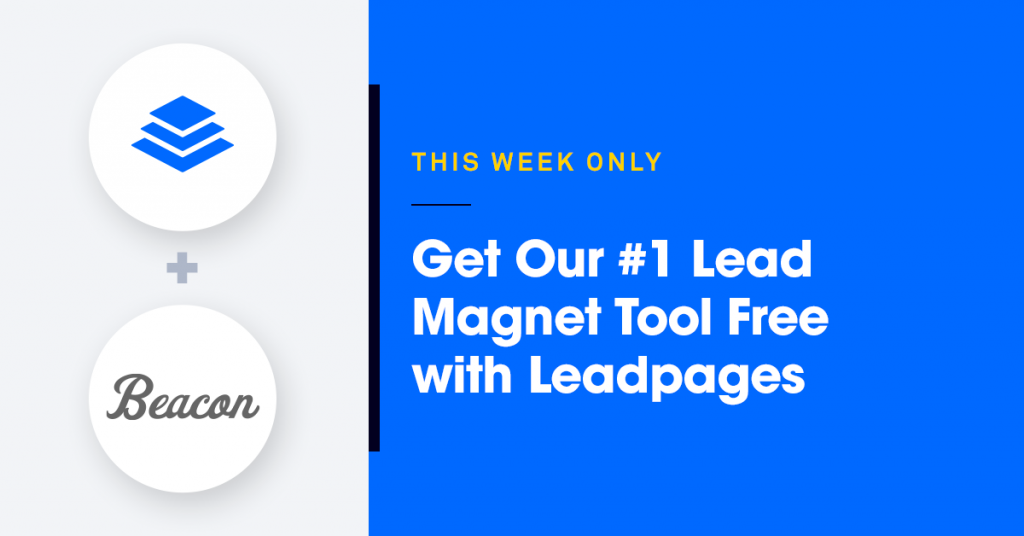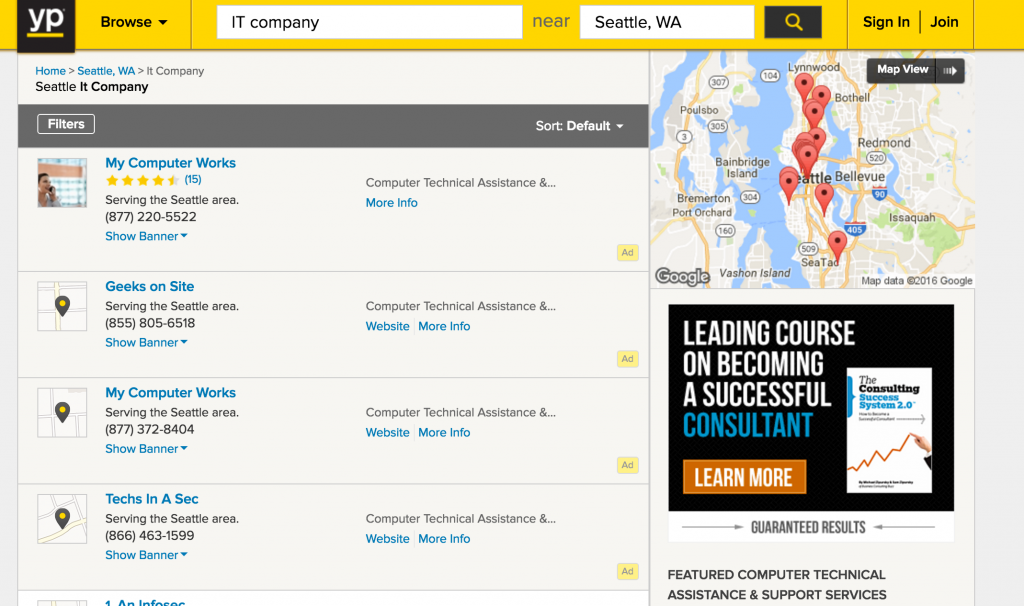You’ve worked so hard to get your company’s website up and running.
Diligently followed SEO advice to attract relevant visitors and generate leads.
But every time you look at the traffic stats…
…you just want to drive your fist through the screen with frustration, don’t you?
Time passes, but Google still continues to ignore your IT business.
And you begin to worry that unless your site starts ranking now, you might have to resort to cold calling and other outbound sales methods to grow your company, right?
I think we can both agree; that’s far from an ideal situation.
Luckily, it’s one you can avoid.
It’s true; SEO takes time. Fortunately, there are other ways to increase your website traffic and get visitors – today!
Let me show you 4 website traffic hacks that will help you significantly increase your web traffic without Google.
Intrigued? Let’s not waste any more time then.
Hack #1. Mention Influencers in Every Piece of Content You Publish and Reach Out to Tell Them About It
Influencer marketing is on everyone’s lips today and for a good reason.
Getting an influencer involved in one way or another in your company’s promotion is an open invitation to talk directly to their audience and raise your brand awareness.

(Image Source – The State of Influencer Engagement Report by Augure)
However, out of the many ways to include influencers in your marketing, one is particularly useful for growing website traffic. Coincidentally, it’s also the simplest one to do:
Quote or reference influencers in your content. And then, reach out to tell them about it, politely asking for help with spreading the word for your content.
For example:

 Easy, isn’t it?
Easy, isn’t it?
So let me give you a quick run through of the process to include and reference influencers:
Let’s say you write a blog post about potential email security threats your prospects should be aware of. You packed it with advice from your experience and even included a couple of basic tips to help a person prevent a potential security issue.
Your next step is to Google other relevant information on the topic. In particular, pay attention to any:
- News announcements,
- Statistics,
- Analysis
(Note: The reason you should focus on those types of information is that they’re less likely to come from one of your competitors.)
Then, find quotable sources, ideally from individuals, rather than companies (as businesses are much harder to reach out to).
For example, after a quick search, I came across this article (let’s pretend that it’s relevant to my piece).

I can see the name of a person who wrote it, and their Twitter ID, making it easier to research and find out more about them.
Using a Chrome extension called Email Hunter, I can also check for any email addresses associated with this person. In this case, Email Hunter finds the person’s direct email.

All this is enough information for me to decide to reference the piece and then, email the person to tell them about it.
(Note: if you don’t manage to find their email address, look for social media accounts. Chances are that at least you’ll be able to tweet them about the content. In fact, you could use software like Notifier to automatically find and notify them via Twitter).
If they share it, then all of their social media followers will learn about your content, many of them will click on the link to check it out and some will even re-share it.
Hack #2. Run a Joint Webinar to Attract Someone Else’s Audience to Your Site
Webinars offer an amazing opportunity to attract people to build your brand recognition, connect with your target audience, raise your authority, and get you traffic + leads.
But the thing is:
To achieve all this, you need to have an audience willing to take part in your event.
Without it, however, you can rarely expect a great turnout and engagement.
And that’s often a serious problem for many IT companies, with audiences counting in dozens rather than hundreds or more.
Luckily, nothing’s lost:
Instead of running webinars on your own, partner with another company, for example, a software provider (perhaps one of your vendors) and run a joint-webinar.
Nathalie Lussier, a software engineer and founder of Ambitionally, defines joint webinars this way:
“Generally speaking, a joint venture webinar is an event that’s held by two business owners or “hosts”, where one of the two or possibly both businesses share a special offer at the end of the webinar.”
There are many examples of successful co-webinars. Here’s one example, LeadPages and Beacon conducted a lead generation webinar together.

Judging by the comments, the event went really well for both parties.

True, organizing a joint-webinar might take time. From finding a webinar partner, defining the topic and preparing for the event.
At the same time, running it can give your brand a much-needed boost that’s worth the effort.
Hack #3. List Your Business on Relevant Local Directories
Ask any SEO and I’m sure they’ll agree:
Local SEO has become one of the most important sources of traffic for any business.
As Jayson DeMers, the owner of the Audience Bloom SEO agency, points:
“Local search engine optimization isn’t just about local mom-and-pop shops anymore. Practically any business can take advantage of local SEO’s benefits.”
And a little-known fact is that local SEO doesn’t just equal setting your business up on Google My Business.
You could also attract a lot of traffic by listing your company on local business directories which both increases your chances of being found online and your organic search value / ability to rank for local search terms.
Local business directories are simply the yellow pages of the Internet era. Yelp, Manta.com or even YP.com are some of the most known examples of local directories.
But why local directories?
You see:
Not everyone uses Google or other search engines to find local businesses.
Many customers also use social media, digital maps (i.e. Google Maps) and other sources that often pull their data directly from the directories.

Hack #4. Use Clickable Headlines First, Optimize Them for Keywords Later to Fully Leverage the Initial Spike of Social Media Traffic
I’m sure you know this already, but to be safe:
A strong headline will attract your audience’s attention, and get many of them to click to your site.
That said, chances are that you approach to writing headlines is reverse of best practice for digital media.
You likely focus on optimizing them for search to improve the article’s or page’s chances to rank. And in doing so, you miss out on the massive spike of non-Google traffic your content would receive in its first days after publication.
Let me explain.
The biggest spike of traffic to your content will happen in the first 30 days after publication.

And if you run a relatively new site, most of these visitors will come from sources other than Google. There will be some social media traffic. Your email newsletter will drive some visitors, and people might refer others to your content as well.
But they’re unlikely to find your content on Google. Because you see:
Often, 30 days isn’t enough for a new article on a new site to rank well enough to attract search traffic.
And so, by focusing on optimizing your headlines for SEO from the start, you miss out on a lot of potential traffic that a more engaging and clickable post title could attract.
So, next time you’re writing an article, focus less on using keywords in the headline and try to make it as engaging and click-worthy as possible.
Tools like the CoSchedule’s Headline Analyzer will help you craft a headline that is bound to catch your audience’s attention.
And then, about 15-30 days later, when your social media traffic starts to wane, revisit and optimize the headline and the rest of the article for SEO.
This way, you’ll ensure a quick boost of traffic when the content goes live, and then, a steady stream of visitors from search as it ranks in Google for relevant searches.
To learn more about crafting viral headlines, check out this amazing and in-depth guide by Steve Rayson from Buzzsumo.
Conclusion
Fact: organic SEO traffic is invaluable. But given the amount of time it takes for a new site to rank and attract search visitors, you might have to resort to working on other sources of traffic than just SEO to start with.
Hopefully, after reading this article, you know exactly what to do. If not, feel free to ask us anytime for help!
Sign up below to receive our monthly IT Services advice + other cool stuff straight to your inbox.